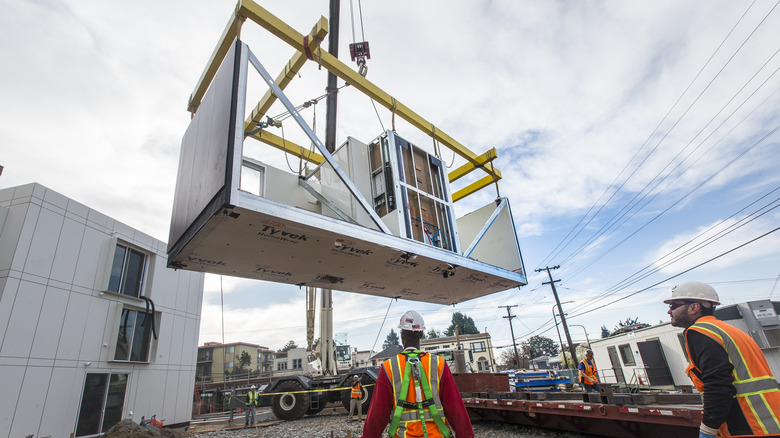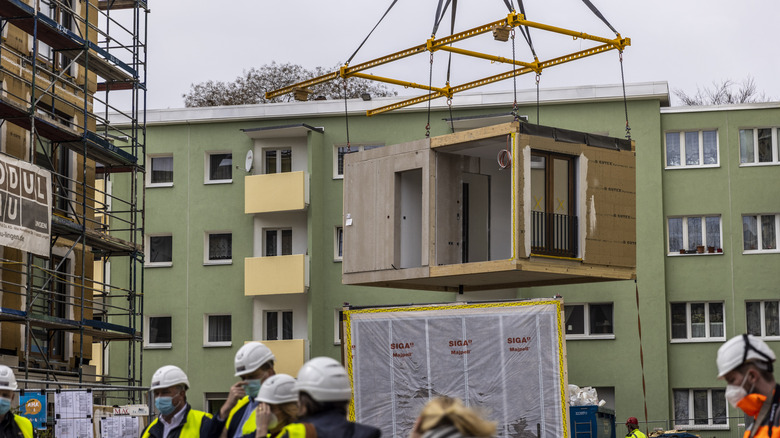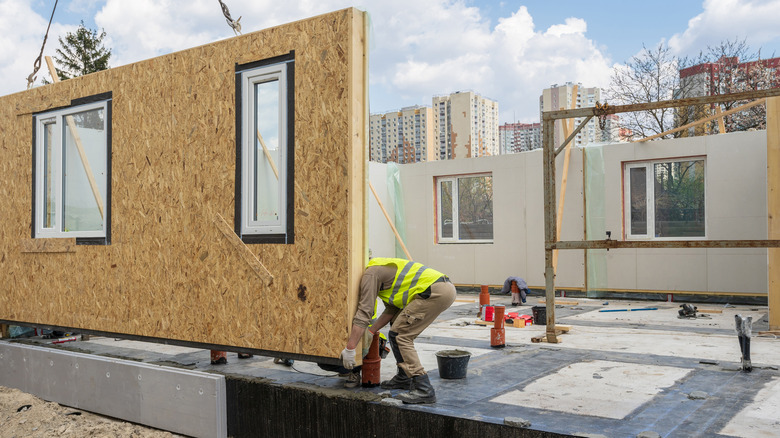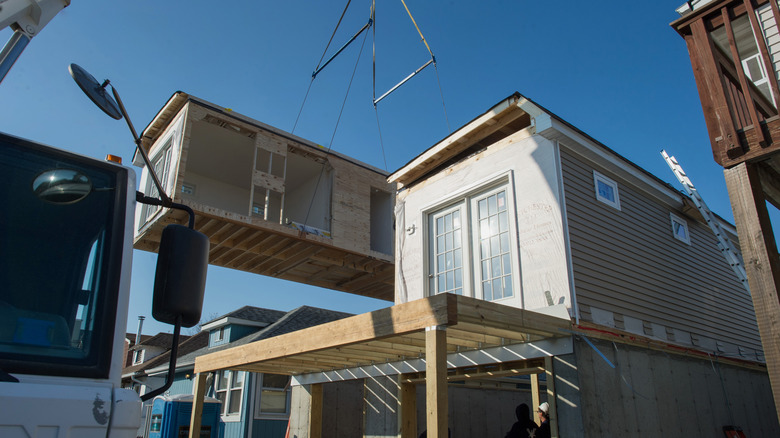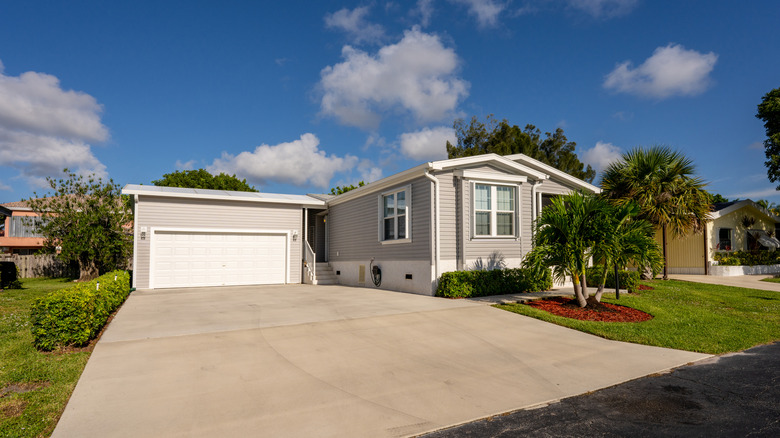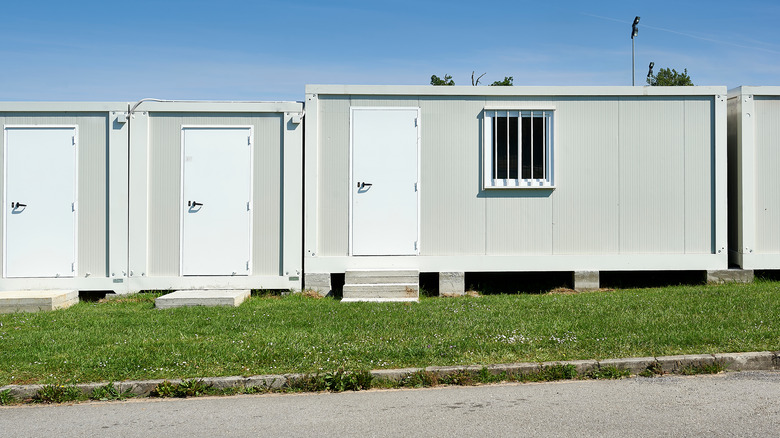How Much Does It Cost To Build A Modular Addition From Scratch?
There are plenty of ways to build a house; however, the modular building style has recently received much attention. But what is modular building? This type of construction happens away from the site, usually under controlled conditions in a factory, before being assembled at the required destination. Compared to the conventional way of building a house, modular construction is a far cheaper alternative and the construction period is significantly less. There are also many styles that you can choose from, ranging from prefabricated to customized designs.
As mentioned earlier, modular construction is cheaper, but how cheap? According to HomeAdvisor, the average cost of building a modular home addition is $100 to $200 for every square foot. To put this into perspective, a 1,800 square foot modular home will cost approximately $180,000 to $360,000, while building a house the conventional way costs ranges from $350,000 to well over a million dollars.
Factors for cost
Just like any other type of construction, several factors determine the cost of building a modular addition in your home from scratch. Among the major factors influencing total price are the size and the cost of purchasing the prefabricated structure. To give you an idea of what to expect, Fixr details the factors that affect the cost of constructing a 2,000-square-foot modular addition.
The cost of purchasing the base home
One of the major cost factors that go into building a modular addition is the price of buying the base home. A 2,000 square foot prefabricated home costs approximately $80,000 to $110,000. This does not include any personalization in terms of materials or styles. Remember, custom materials might cost more, therefore, increasing the cost of the base home altogether. Also, it goes without saying that bigger modular homes will be more expensive than smaller ones. It is worth mentioning that the base home price does not include any additional utility like the garage; you will have to pay for this separately.
Land preparation
Regardless of the size of your addition, the land where the modular addition will be built should be prepared. The preparation work might involve removing a section of the existing building or removing obstacles like trees. The scope of work that is necessary as far as land preparation is concerned will determine how much you will pay for this service. Land preparation that involves demolition and other heavier tasks will cost you more than a simple leveling job. On average, the cost of land preparation is about $1,600 to $8,000.
Delivery
Since a prefabricated home is built away from the site, usually in a factory, the company will need to transport this house to you. If the company is located within your region, you are in luck because the transportation charges will be fair. However, if you are ordering a home from a company in a different state, then prepare to dig deep into your pockets. Other than the distance from the factory to your residence, what also plays a huge factor in the delivery cost is the size of that particular home addition. Bigger modular additions will need more delivery vehicles than smaller homes. On average, the transportation cost ranges from $8,000 to $10,000 for deliveries within the same region.
Installation costs
Once the individual pieces are safely transported to your home by the manufacturer, this is where the real work begins. The modular home is assembled on the foundation just like any other house via a process referred to as buttoning up. How much you have to pay for the task entirely depends on the size of the home addition and also your specific contractor. A bigger home addition has many pieces; therefore, a larger buttoning up cost. However, the average cost of the installation is about $10,000 to $30,000.
Additional costs
Unfortunately, most modular home additions only provide the structure of the house without the necessary amenities to make it a home. Therefore, it is necessary for you to have a separate budget for the other additions.
Electrical, plumbing, and HVAC installation
To make your modular addition in your home more habitable, you will need to install various amenities like electrical, plumbing, and HVAC system. The installation cost for these services varies greatly depending on the complexity and overall scope of the work. However, HomeGuide details that the average cost of installing the electrical, plumbing, and HVAC units are approximately $2,500 to $25,000. You should be aware that you will have to pay more if you require the installation of a septic tank or a solar unit.
Permits and fees
Keep tabs on the necessary permits that are a prerequisite before building a modular addition to your home. According to HomeAdvisor, the permit fee is approximately $500 to $5,000. There are several kinds of permits that you might need to pay for, so it is necessary to check the building code in your region on the specific permits that apply to your unique situation.
Sales tax
Modular home extensions usually have a sales tax that is attached to every purchase you make. The amount you have to pay is dependent on the size of the modular home, often between 5 and 7%. HomeGuide explains that the cost adds up to approximately $5,000 to $15,000 on average. If you have any questions about the sales tax, your manufacturer is the best person to answer those questions.
Types of modular additions
Modular home additions give you the opportunity to add more structures to your house without breaking the bank. There are several types of additions that you can choose from, depending on your budget. Whenever you are ready, sit down with your contractor and have a look at the options that are possible within your budget (per HomeGuide).
Room/office addition
Adding an extra room is a popular choice for most people who consider modular extensions to their homes. Building a 144-square-foot room with new foundations and a roof will cost you approximately $11,000 to $20,000. Again, you will need to factor in extra costs for the installation of other necessary utilities like electricity and plumbing systems.
Bathroom addition
This is another common type of modular addition that is applicable to regular homes. You can never have enough bathrooms. Installing a bathroom is quite different than any other regular room because of the extra fittings like the shower, tub, and sink. Your budget should be from $15,000 to $40,000 for a single bathroom. Of course, the cost will go up with an increase in the number of bathrooms.
Second Floor
You will be pleasantly surprised to know that you can add another floor to your existing home using the modular type of construction. The addition of a second-floor involves the addition of more than just a room. In a scenario where you need to add a 1,200 square foot floor with bedrooms, bathrooms, windows, and a staircase, the budget should be about $100,000 to $300,000
Guesthouse suite
Also referred to as an in-law suite, this addition could either be a simple bedroom with a bath or a full apartment suite on its own. A 600 to 750-square-foot guest house suite with a concrete slab, three windows, and a mid-sized bath will cost approximately $45,000 to $135,000.
Why you need a modular addition
There is always a need for extra space in the house, whether for the guests, an extra garage for your new car, or even an extra storage space. Here are some reasons why you need a modular addition to your home, according to Bob Vila.
For extra space
Extra space is the major reason why most homeowners choose to build extra rooms in their homes. A bigger house with plenty of spaces gives room for a growing family. Every family member will have a personal space they can call their own. Extra rooms also mean more storage areas for equipment and other things within the house. When you hold parties in your home, your guest will have enough space thanks to the expanded living rooms within your house.
To improve the value of your home
Typically, significant improvement projects that you do to your home are likely to increase the value of your home. While this is true even for modular additions, you should also understand that expensive improvements don't always translate to a significant increase in home value. Bob Vila advises that you should carefully consider the cost of the improvements and consult with a real estate professional on the improvement that will boost your property value.
More luxury
Luxurious add-ons to your house should not be too costly. These simple upgrades, like adding a bigger bathroom for yourself, will improve the quality of your life. Another example is having an extra room for your workouts will improve your chances of working out right from home, especially during the cold months.
Benefits of modular additions
Modular construction and additions give you extra benefits than conventional site-built homes. Conversely, the major downside of this approach to construction is that you will have to pay upfront for most of the things. Other than that, the benefits are overwhelming.
You move in quicker
According to HomeGuide, modular construction reduces the move-in time by up to 60% as compared to the conventional or other new construction home options. This is only possible because construction is not affected by bad weather since home pieces are built in a factory. On average, the move-in time is from two to six months, but smaller projects like minor additions will take an even shorter time.
Reduced construction cost
Modular houses are less expensive than stick-built houses. First off, there is no need for subcontractors because you only need the manufacturers and the contractor. Also, since the construction time is reduced significantly, you don't have to pay as much for labor as you would have a regular stick-built home. Modular homes cost up to 20% less to construct than their stick-built counterpart.
Design flexibility
In comparison to regular site-built homes, modular homes have relatively more design and customization options. Manufacturers use computer-aided design software that comes up with designs that will meet your requirement. What's more, this intelligent software results in more accurate parameters than regular homes.
